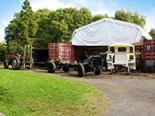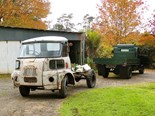FGK Morris Restoration—Part 12
In the latest chapter of the FGK Morris restoration, Deals on Wheels writer Lyndsay Whittle updates on the progress till date
Anybody who’s been following the restoration over the last few months will know that one of the major issues with this job has been that I’ve had a lot of trouble tracking down a plastic Morris badge to go on the front of the truck.
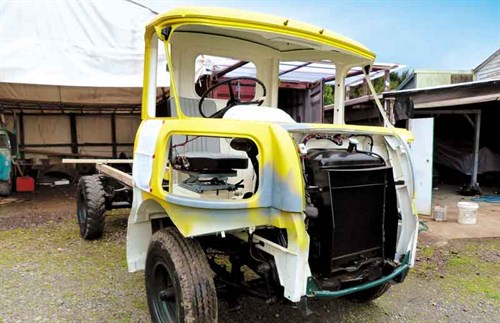
While I haven’t considered it to be an immediate problem—as it won’t be of any real concern for a few months yet given that there’s a lot of work to finish in the meantime—it appears that help is at hand, but more about that later.
Last month, I finally decided to turn the truck into a tow wagon but was faced with another problem: finding a winch and a towing rig to go on the back.
As mentioned in the previous issue, I managed to track down an old-fashioned hand-crank winch (but not the rest of the rig) in Masterton, which I duly purchased with no idea as to how I was going to get it up to Auckland.

I spoke to my mate Murray about the situation and he agreed to pick it up in his 1931 W Bedford. If that doesn’t seem far-fetched enough, after loading the winch on the back of his 86-year-old truck, he and his wife Penny took the winch on a tour of all the backroads to the absolute bottom of the North Island before delivering it safely back to me in Auckland.
Thanks heaps, Murray and Penny! Once I’ve tidied up the old winch, I’ll have to manufacture a towing rig to go around it, which should be a bit of fun in the weeks to come.
Sourcing the right Morris badge
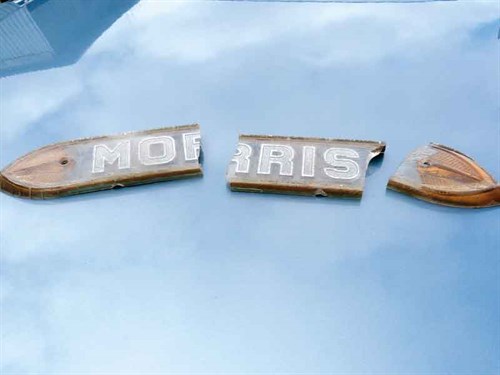
Getting back to the plastic Morris badge, the likes of which are even more scarce than those proverbial hen’s teeth, I’ve managed to find one, unfortunately not to keep, but
at least to borrow so I can take it to a plastics company to see if they can make me a replica.
The poor old badge isn’t perfect by any stretch of the imagination, as it’s currently in three pieces. However, if I glue it back together, it’ll be 95% complete, hopefully making it good enough for a pattern for the plastics guys to work with.
The badge appeared from out of nowhere when I received a call from Judith Wallath in Auckland, who had been reading online one of my articles on this restoration and who thought that I may be able to help her husband, Bob, in finding a home for his 1962 T200 Morris truck that he no longer uses. Bob and Judith still had the bits of the badge hidden away (in their closet).
The T200 Morris looks pretty much the same as my FGK30, only it’s a little bit longer and has dual rear wheels, but come with the same six-cylinder engine as an FGK 60 Morris or Austin. Just to confuse things further, the T200 is sometimes referred to as an FGK40.
But rather than going into a great long spiel about the pros and cons of a T200/FGK40, I’ll get hold of a few photos of Bob’s truck for the Morris enthusiasts to pour over in the next month’s issue.
Getting down to work
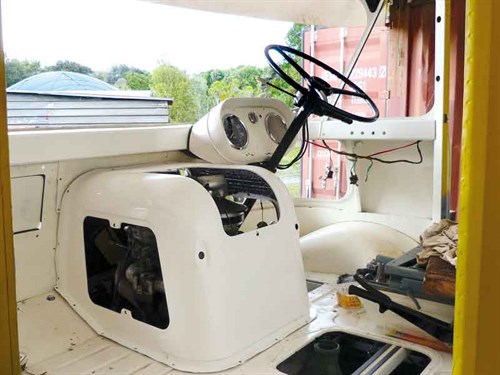
Like I said earlier, aside from poncing around, looking at other people’s trucks and borrowing their plastic badges, and getting mates to deliver old-timer winches to my door, I have (honestly) been doing some semi-serious work on progressing the restoration work.
To be fair though, much of the ‘work’ involved has been to do with standing to one side, looking at the truck, and trying to visualise how an authentic finished product might look like when the recovery truck tray is completed.
I’ve trawled the internet for photos of old-time tow wagons that I can use as a reference, and I’m here to tell you there are hundreds, none of which I’m afraid are built on FGK30 Morris cab and chassis.
But wait a minute—here’s an idea that’s hot off the press. As I was writing these words, I had the strangest idea. When I started writing this restoration series a year ago, I recall saying that a major influencing factor in my getting hold of an FGK to restore was from watching the series Heartbeat. You may remember the British programme about life in the Yorkshire Moors, where garage proprietor Bernie Scripps had a blue FGK recovery vehicle.
I went back to the computer and a few minutes later, had the answer to my conundrum after having a quick look at the tow truck in a video clip of the TV programme. There you go—this just goes to prove that it does pay to write out your immediate worries in order to find the answer to your problems.
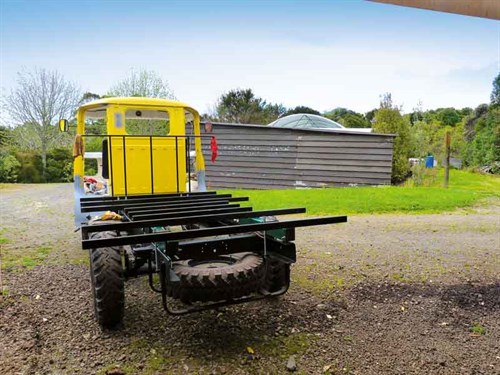
At the time of writing, I’m still waiting on my mate Tony—the panel beater—to get the front wings back to me. However, he assures me that he’ll have them back in just a few days after this issue goes to print.
On a positive note, though, the swaged floor panel that Mark at Alpine Panel Beaters made to look just like the original has been fitted, virtually completing the interior of the cab—a major step in the right direction.
I’ve also been busy making the framework for the deck and headboard, and I’ve cut the timber decking to length and have collected enough panel steel (Zintec from Fletcher Easy Steel) to complete the cabinets that’ll eventually be fitted to the back of the truck.
Also, I have dismantled the winch and it’s ready to be taken to the sandblasters for a bit of a tidy-up. It’s all slow going, but nevertheless, I’m reasonably happy with the progress
to date.
Coming up next month
Will the front wings be back in time for fitting to the cab?
Tip of the month
Write out your problems. You’ll be truly amazed at the results.
Read more updates on the FGK Morris restoration on Deals on Wheels.
Keep up to date in the industry by signing up to Deals on Wheels' free newsletter or liking us on Facebook.









.jpeg)
.jpg)

